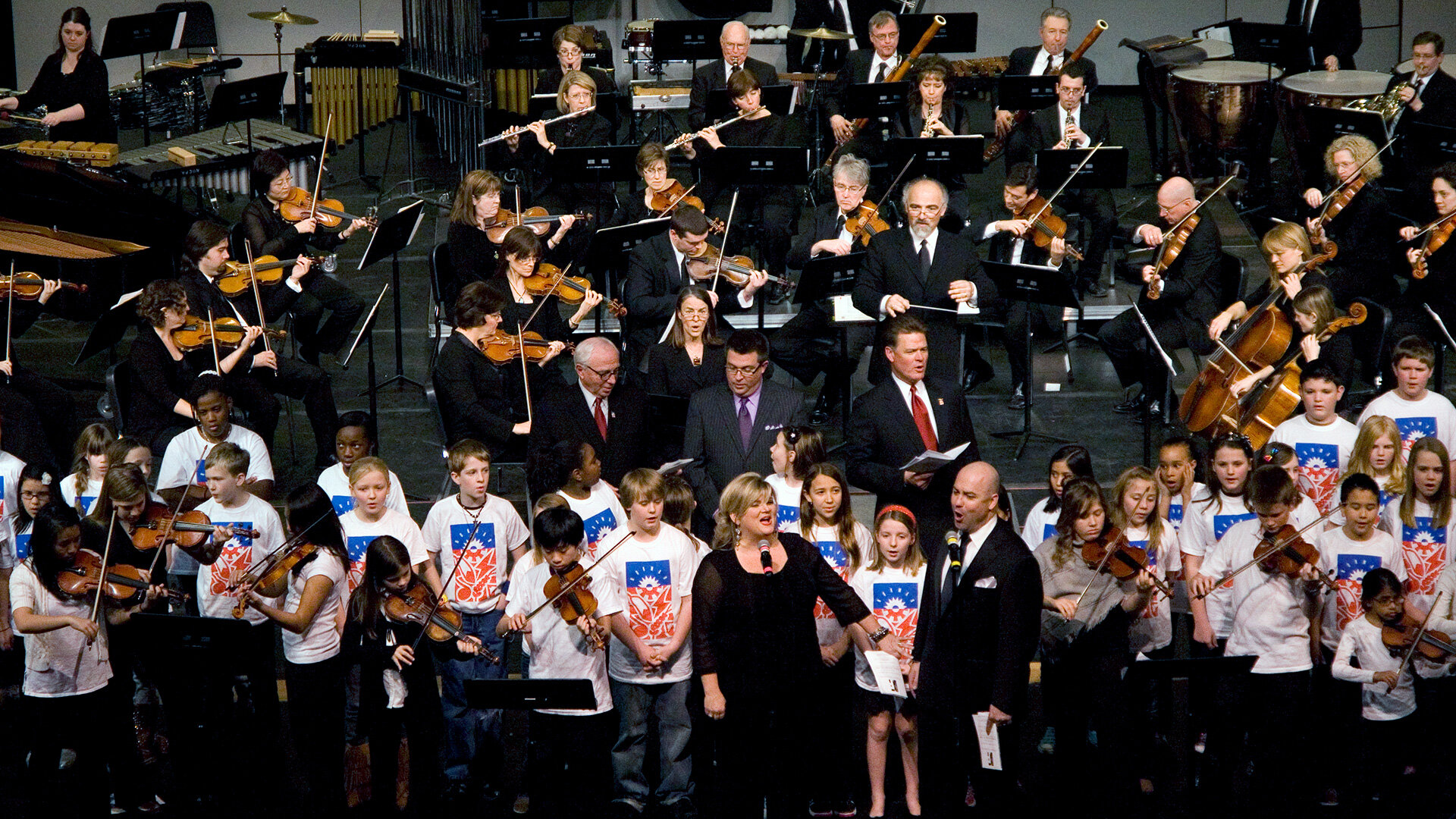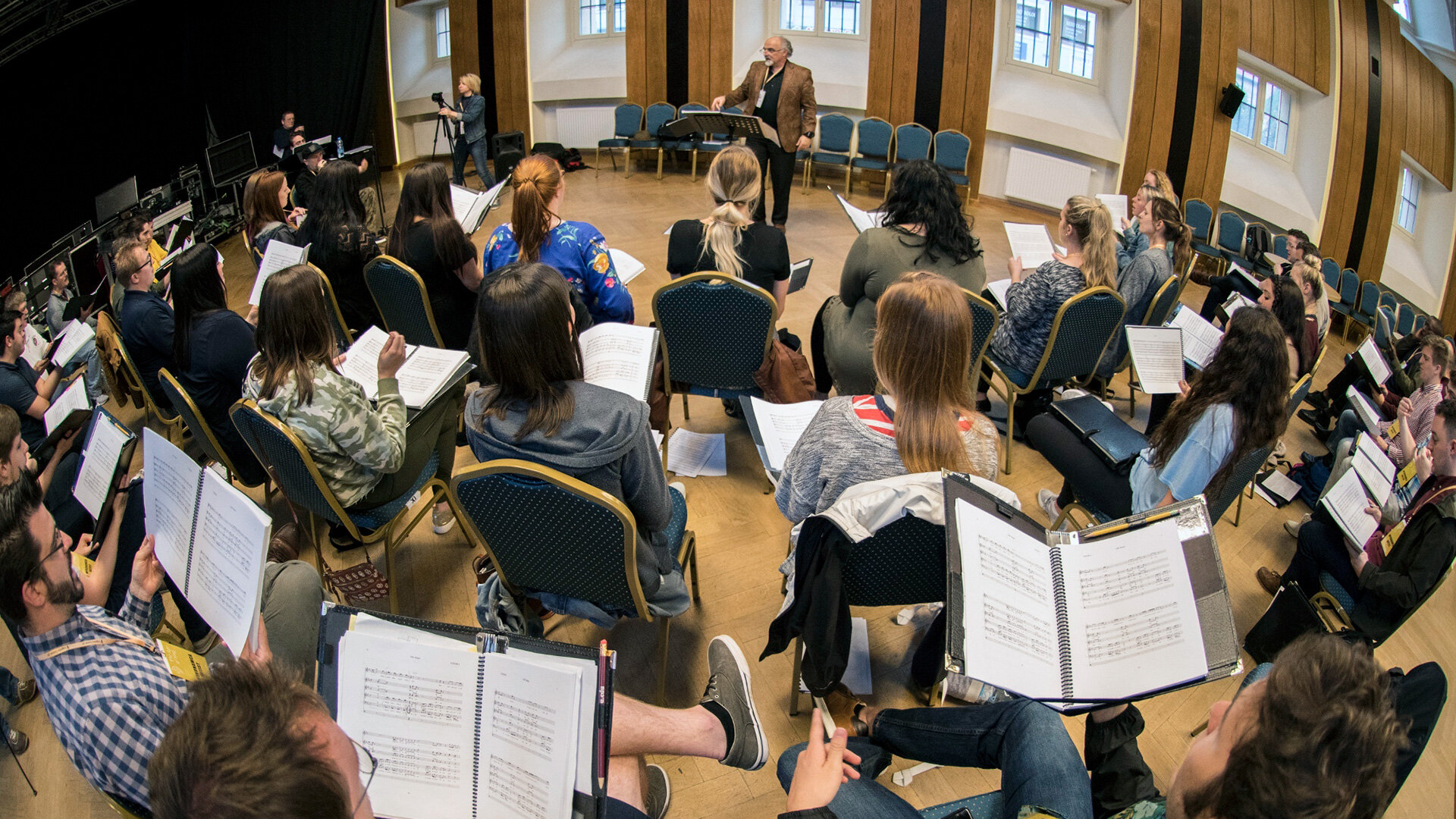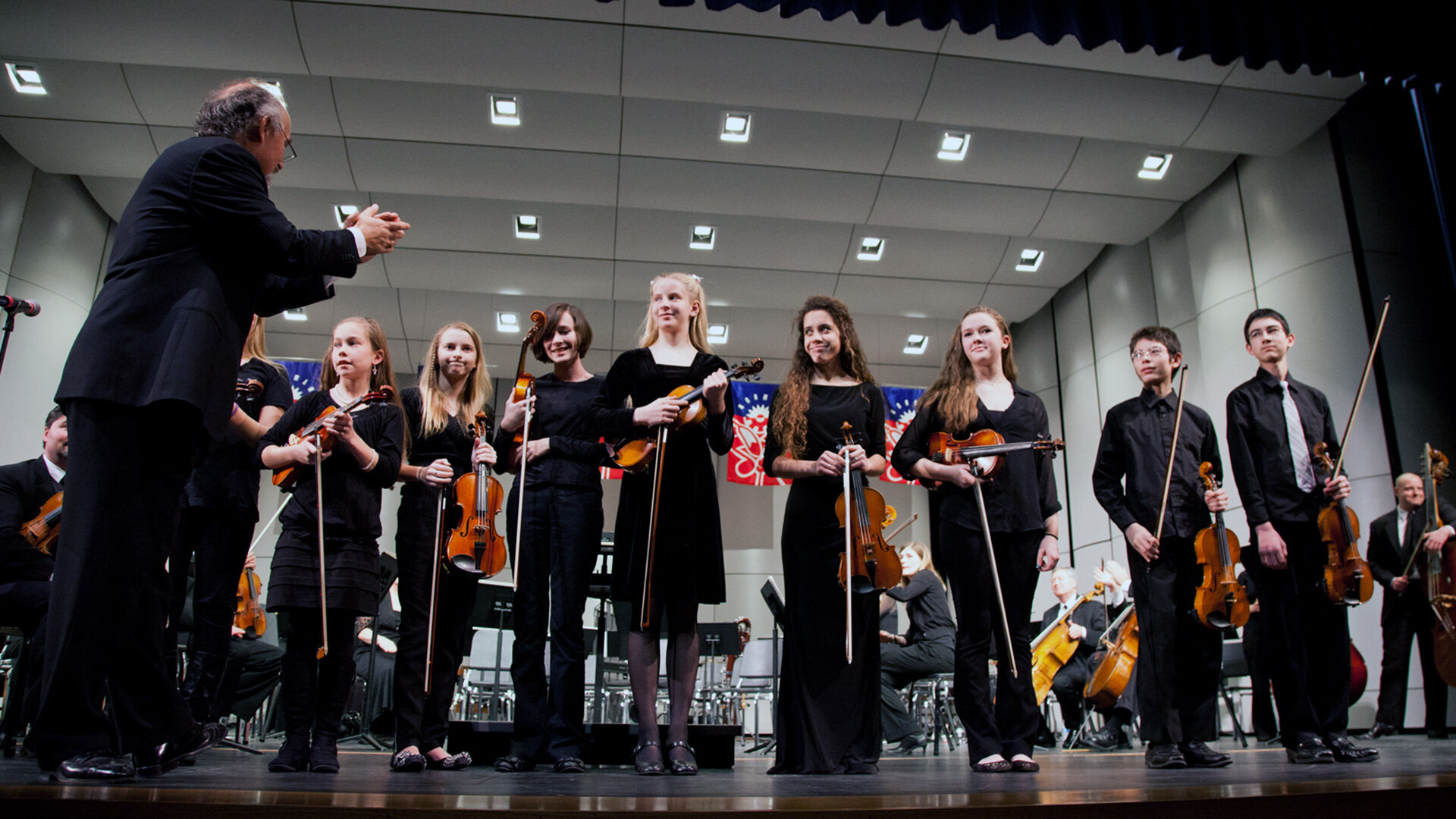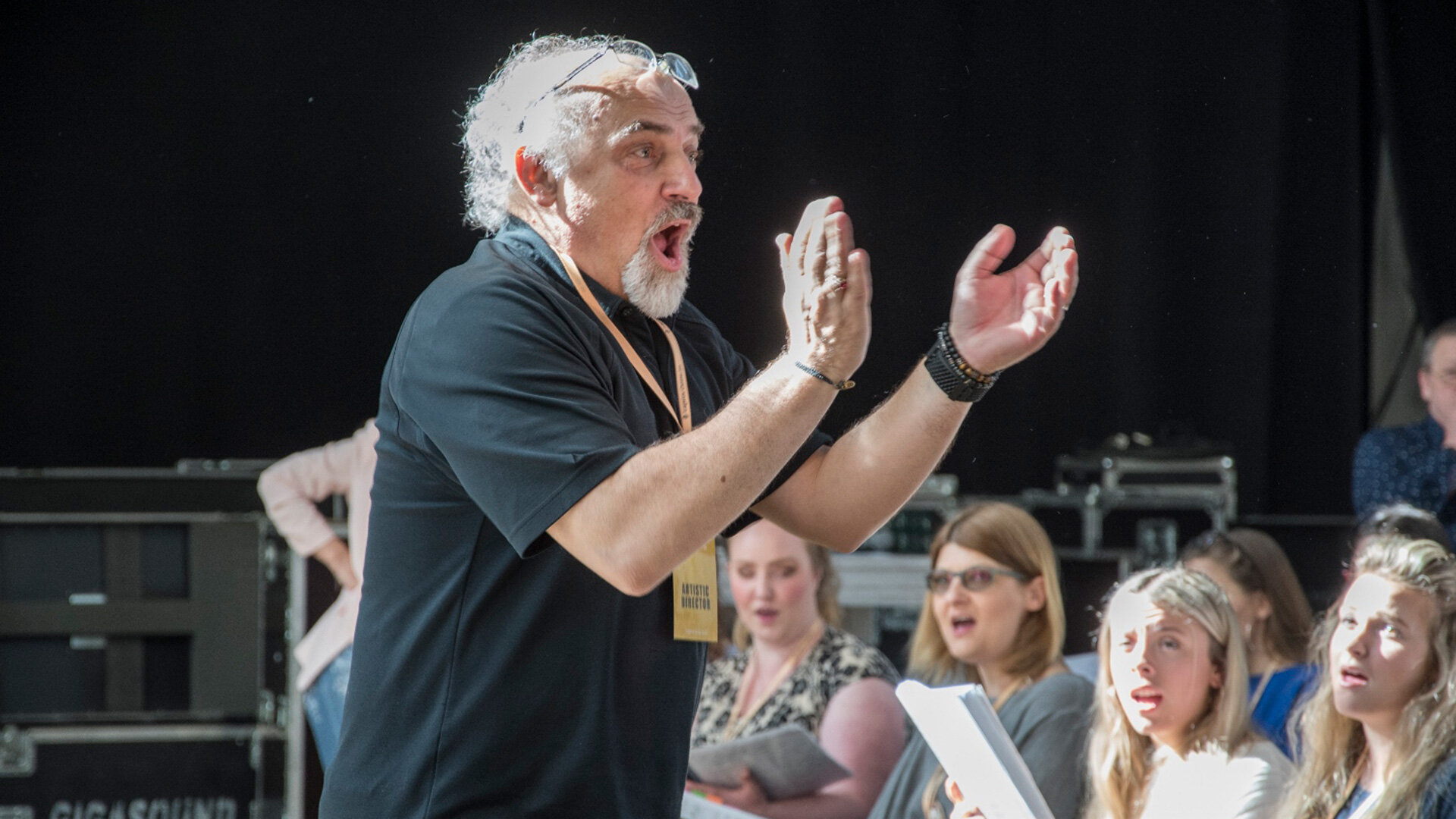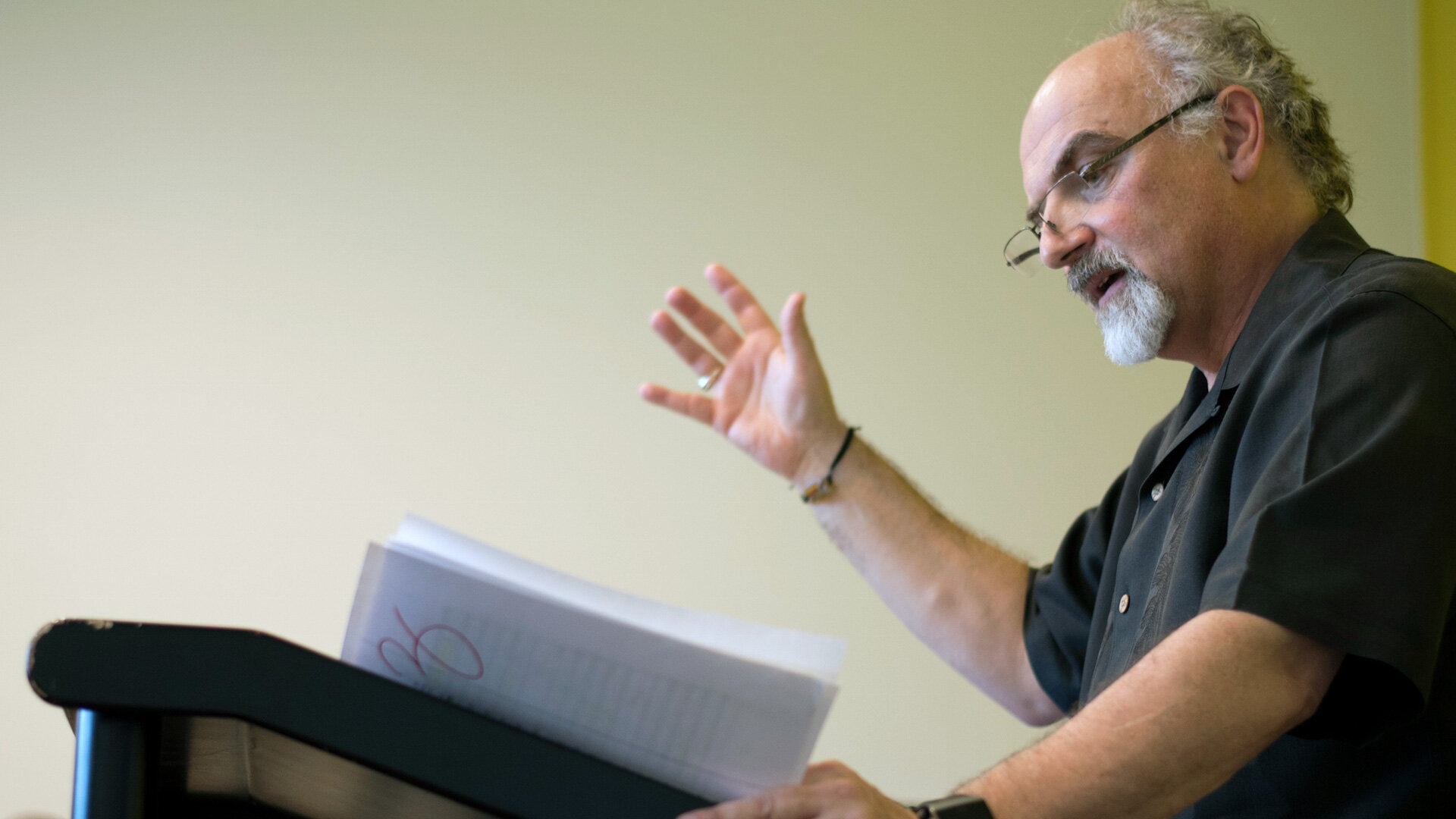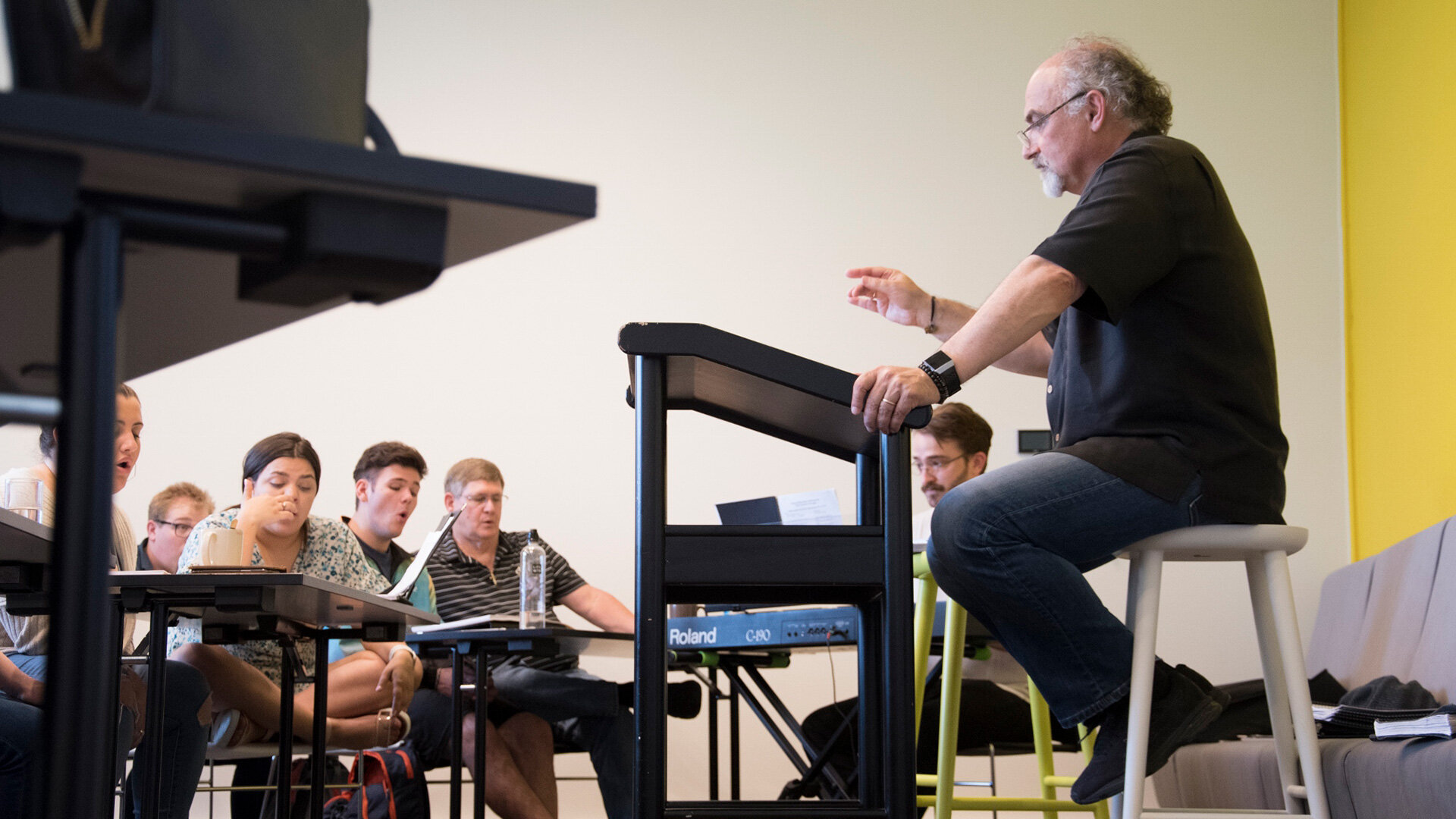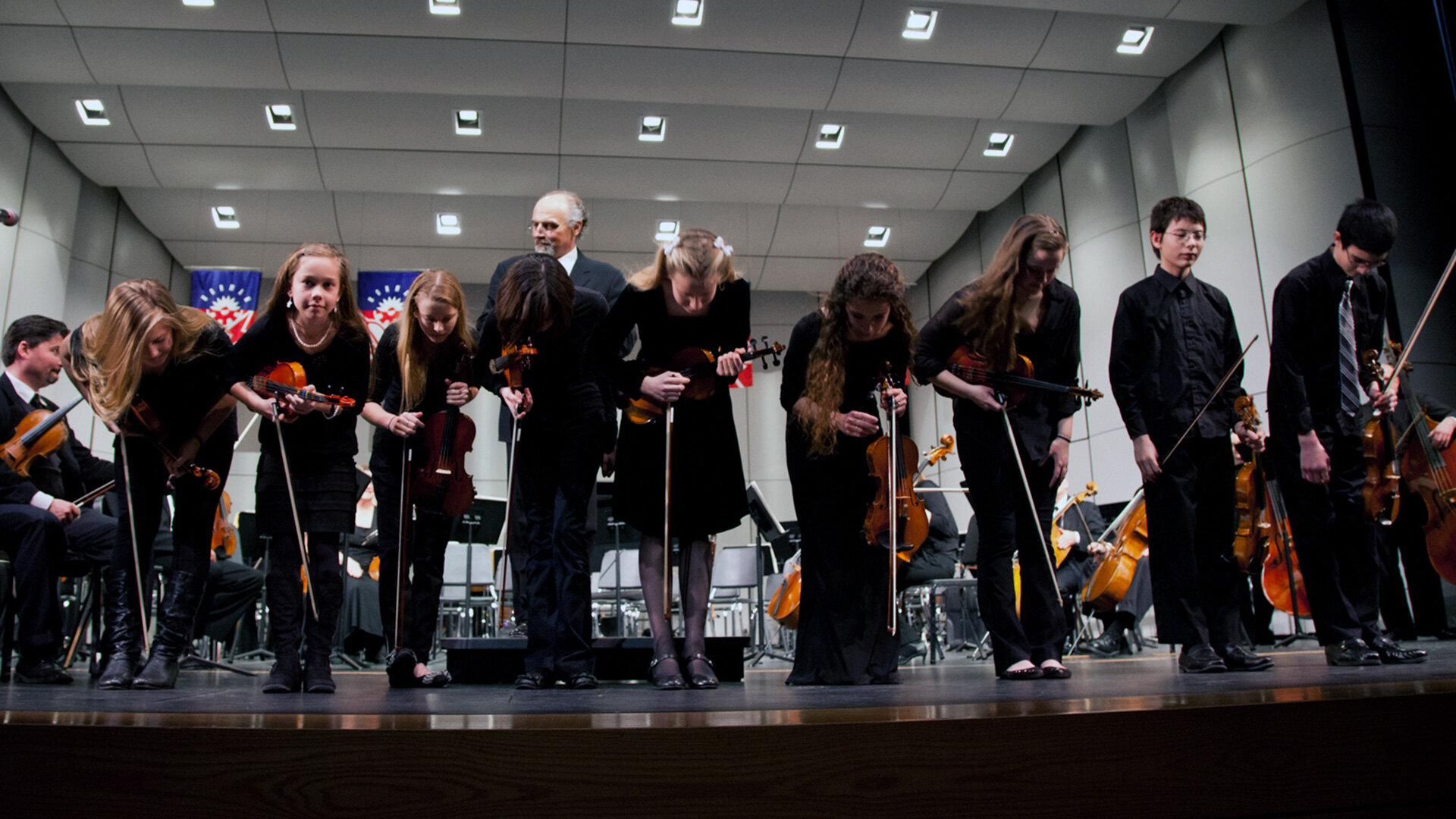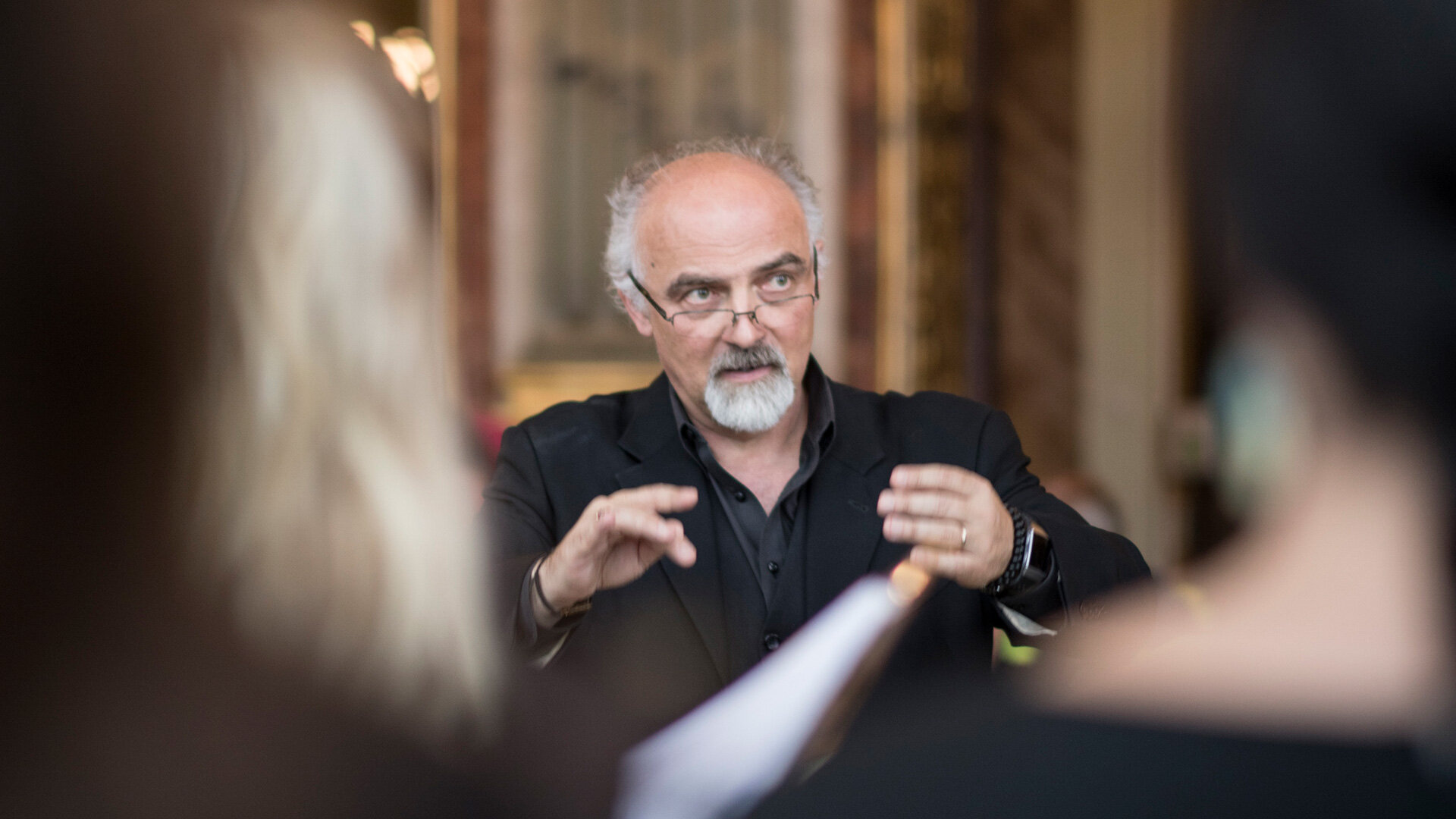Building Blocks for a Successful Performance
Ensembles need to be guided through a systematic learning process if they are to be successful and communicate to the listener. To prepare, inspire, and encourage musicians in an orderly step-by-step manner is the foundation of Zielinski’s system of learning titled The Performance Pyramid. Zielinski’s Performance Pyramid combines seven building blocks, which he uses or trains other conductors to use that assist in teaching the essential elements of music as an ensemble proceeds toward a successful performance.
If you are interested in booking a workshop or a consultation, contact Dr. Z to get started.
Bringing Music to Communities
Richard Zielinski is passionate about bringing music to everyone, and he does this through his work with the Norman Philharmonic, his work in Poland,Classical Music Festival, and the McFarlin United Methodist Church. Zielinski created an educational event focused around unity and the positive messages of Martin Luther King Jr. In celebration of MLK Day, the Norman PHIL with the Zielinski Singers, and community chorus explores music from a different guest composer each year. This event also features guest speakers, as well as an audience sing-along of civil rights songs, hymns, and popular music reminding us of the mission and dreams of Dr. Martin Luther King, Jr. There are daytime performances for 2,000 fourth and fifth graders from the Norman Public School system as well as a performance that is open to the public.
Zielinski’s 12 Choral Maxims
A short, pithy statement expressing a general truth or rule of conduct: the maxim that actions speak louder than words.
Choruses that breathe together achieve together. Prepare each sound with the proper breath.
Soft, sincere singing is the key to great singing.
Two notes of equal value or charter should not be performed in the same manner.
Your tone should be a mix of 90% us and 10% me. If you can hear your own distinct tone quality, you are not blending with others.
Sing as loud as your section can sing beautifully.
Choirs are judged by how wonderful and unified the soprano section performs
Basses must crescendo as they descend watching descending 3rds, 6ths and 7ths.
Altos, please sing with a full, velvety, unified sound.
Tenors, perform as though you are performing a concert of lieder.
Define, stretch and sustain the best vowel in each word.
Look up every two or three consecutive measures, it will help you listen to others and communicate with the audience. The eyes are the window to the soul.
The end of a phrase is the last sound the listener hears and should go completely unnoticed.
As I read these maxims, I realize that many of these “rules of conduct” are the result of my working with, singing under, and studying with the best conductors in our business. Many thanks to my mentors, teachers and singers! ~Richard Zielinski


